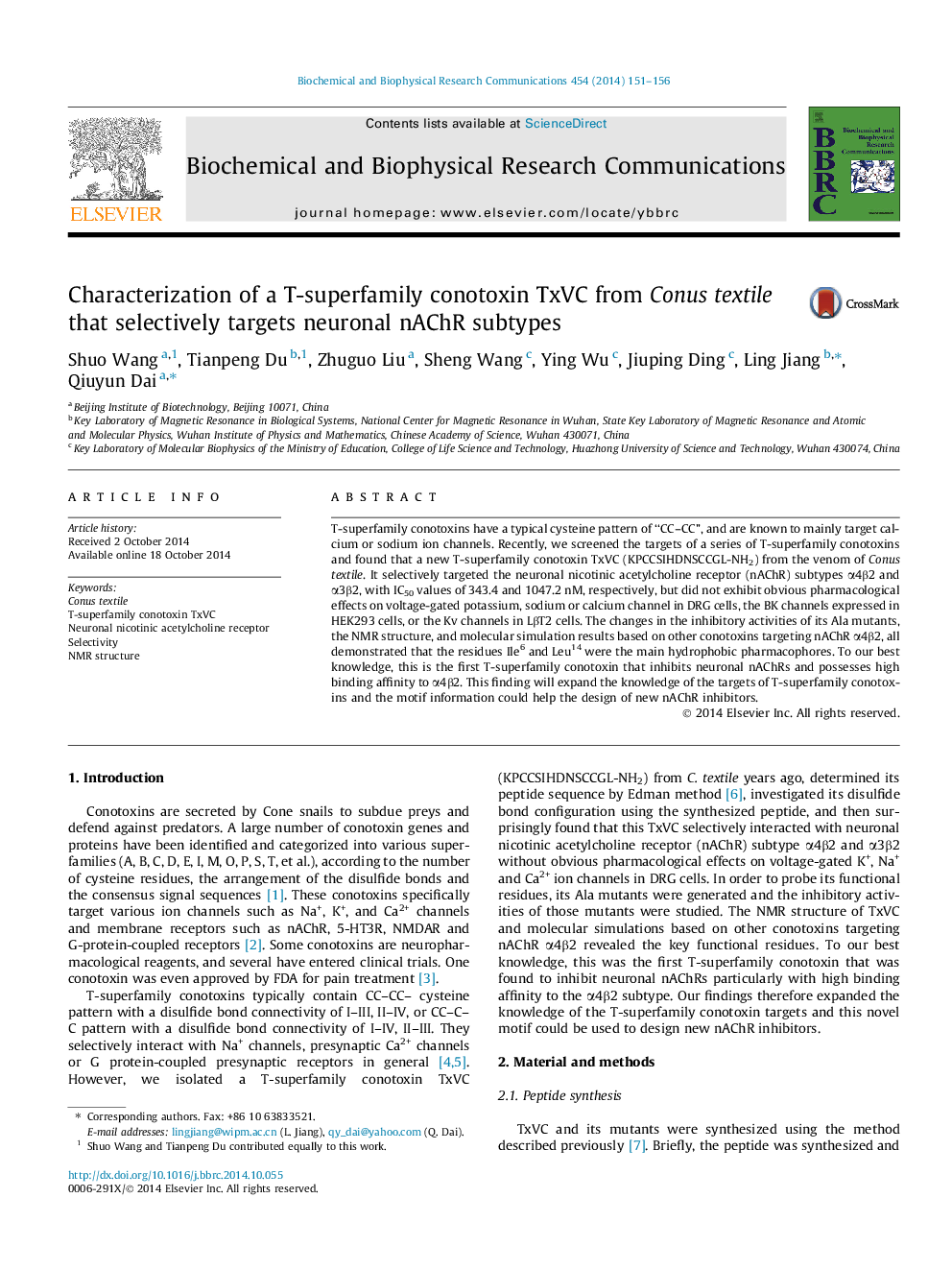| Article ID | Journal | Published Year | Pages | File Type |
|---|---|---|---|---|
| 10753453 | Biochemical and Biophysical Research Communications | 2014 | 6 Pages |
Abstract
T-superfamily conotoxins have a typical cysteine pattern of “CC-CC”, and are known to mainly target calcium or sodium ion channels. Recently, we screened the targets of a series of T-superfamily conotoxins and found that a new T-superfamily conotoxin TxVC (KPCCSIHDNSCCGL-NH2) from the venom of Conus textile. It selectively targeted the neuronal nicotinic acetylcholine receptor (nAChR) subtypes α4β2 and α3β2, with IC50 values of 343.4 and 1047.2 nM, respectively, but did not exhibit obvious pharmacological effects on voltage-gated potassium, sodium or calcium channel in DRG cells, the BK channels expressed in HEK293 cells, or the Kv channels in LβT2 cells. The changes in the inhibitory activities of its Ala mutants, the NMR structure, and molecular simulation results based on other conotoxins targeting nAChR α4β2, all demonstrated that the residues Ile6 and Leu14 were the main hydrophobic pharmacophores. To our best knowledge, this is the first T-superfamily conotoxin that inhibits neuronal nAChRs and possesses high binding affinity to α4β2. This finding will expand the knowledge of the targets of T-superfamily conotoxins and the motif information could help the design of new nAChR inhibitors.
Related Topics
Life Sciences
Biochemistry, Genetics and Molecular Biology
Biochemistry
Authors
Shuo Wang, Tianpeng Du, Zhuguo Liu, Sheng Wang, Ying Wu, Jiuping Ding, Ling Jiang, Qiuyun Dai,
